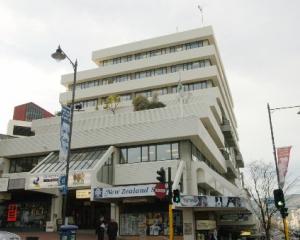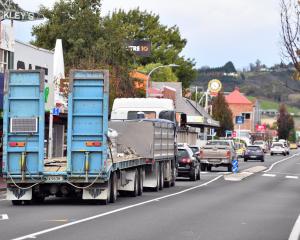The city's earthquake-prone buildings policy has not been regarded as a success, and work on a new version is proceeding in the wake of the Christchurch earthquake, and the recent partial collapse of a heritage building in Rattray St.
But Mayor Dave Cull said he was not sure there would ever be a fundamental change to the policy, because many building owners would simply not be able to afford to do the work.
"I think we've got every reason to be concerned about old buildings falling down," he said.
"I think we know, if an earthquake hits, a lot of buildings will come down.
"The problem is, if we get really draconian and say 'you've got to do this in two years', we could have a whole lot of demolition."

Mr Cull was asked about the policy, and concerns about the safety of buildings following the partial collapse of the Barrons building in Rattray St in January.
There were suggestions then other buildings were in a similar state. Mr Cull said that might be the case, but the council was not aware of any.
Asked if the council should be more proactive in finding them, Mr Cull said some may argue that, but he asked what that would involve.
"If you have no reason to think someone is a burglar, do you search their house?"
The council faced the same sort of issues as it did when the earthquake-prone buildings policy first came out about four years ago, and the owners of Larnach Castle said if they had to bring their building to the required standard, they would have to close.
Council chief building control officer Neil McLeod yesterday said he would not describe the earthquake policy as a failure, "but it has not had the desired result".
He agreed the city faced a balancing act to ensure a revised policy encouraged owners to upgrade their buildings, rather than demolish them because they could not afford the work.
Mr McLeod worked in Christchurch last week, in part managing suburban building evaluation teams deciding if homes were safe to live in.
The present policy required buildings used for emergency response, such as hospitals and civil defence centres, to be assessed by a structural engineer within two years, buildings of four storeys or housing 500 people or more within five years, and other buildings if there was a change of use, or a consent application.
The time periods for action to be taken were, in some cases, up to 30 or 40 years.
"Responsible" building owners, such as the University of Otago and the district health board, had already done the work, he said.
The time periods were a matter of much debate around the country, and with public consultation due, now was the time for residents to have their say.
The policy was "somewhat reactive", and difficult to understand.
"The new draft policy recognises that fact," he said.
"The big question is what level of earthquake strengthening is best for Dunedin."
Strengthening of buildings involved work such as "tying" floors to the brickwork in walls, using structural steel, or "a whole raft" of engineering work.
• Wellington City Council has released its list of potentially earthquake-prone buildings: 808 spread across 217 streets.












